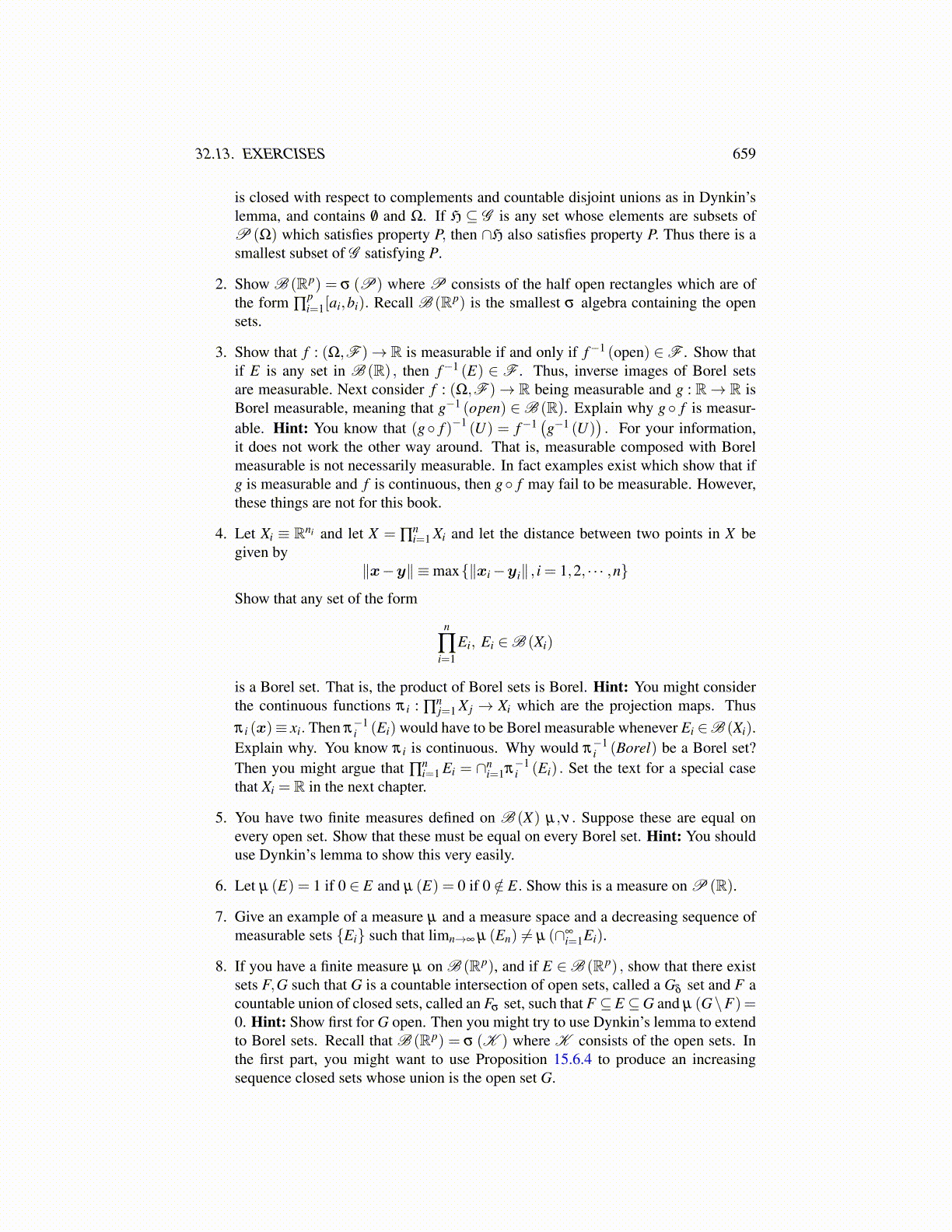
33.3. THE LEBESGUE INTEGRAL AND RIEMANN INTEGRAL 659
Since ε is arbitrary, this shows 33.1 holds for any S and so any open interval is in F . ByTheorem 32.1.5, every open set is a countable union of open intervals. Therefore, all opensets are in F . As to half open intervals, (a,b] =∩∞
n=1(a,b+ 1
n
)=(∪∞
n=1(a,b+ 1
n
))C ∈F .A similar argument shows that closed intervals are in F also.
33.3 The Lebesgue Integral and Riemann IntegralHow does the Lebesgue integral taken with respect to Lebesgue measure compare with theone dimensional Riemann integral of a nonnegative continuous bounded function? First ofall, to save space, I will write
∫ ba f dm for the Lebesgue integral
∫X[a,b] f dm. The following
proposition shows that when a function is Riemann integrable, it is also Lebesgue integrableand the two integrals give the same answer.
Proposition 33.3.1 Let f ≥ 0 and let it be in R([a,b]) . Then f is Lebesgue integrableand ∫ b
af (x)dx =
∫ b
af dm
Proof: By the Riemann criterion, there exist upper sums U ( f ,Pn) and lower sumsL( f ,Pn) such that U ( f ,Pn)−L( f ,Pn) < 2−n. Let an (x) be a step function correspondingto U ( f ,Pn) such that
∫ ba andm =
∫ ba an (x)dx and let bn (x) be a step function correspond-
ing to L( f ,Pn) ,∫ b
a bndm =∫ b
a bn (x)dx. Thus bn (x) ≥ f (x) ≥ an (x) . We can also arrangeto have the partitions be increasing so that bn (x)≤ bn+1 (x) · · · ,an (x)≥ an+1 (x) · · · .Thesestep functions are constant on intervals or half open intervals. Now every interval is a Borelset (Why?) and so these functions are Borel measurable. Let g(x)≡ limn→∞ bn (x) ,h(x)≡limn→∞ an (x) Then g(x)≤ f (x)≤ h(x) and
∫ ba (h−g)dm = 0. Therefore, off a set of mea-
sure zero h(x) = g(x) . By completeness of Lebesgue measure, it follows that f must beLebesgue measurable because it is not equal to the Borel function g only on a subset of theset of measure zero where h(x) ̸= g(x). Also, by the monotone convergence theorem,∫ b
af dm =
∫ b
agdm = lim
n→∞
∫ b
abndm = lim
n→∞
∫ b
abn (x)dx
= limn→∞
L( f ,Pn) =∫ b
af (x)dx
What if f is bounded, continuous but maybe not nonnegative? Then you can writef = f+− f− where, as before, f+ ≡ | f |+ f
2 , f− ≡ | f |− f2 . These x→ x+,x→ x− are continuous
and so f+, f− are measurable. You know that∫ b
af dx =
∫ b
af+dx−
∫ b
af−dx =
∫ b
af+dm−
∫ b
af−dm ≡
∫ b
af dm
Theorem 33.3.2 If f ∈ R([a,b]) , then the Riemann and Lebesgue integral are thesame. Thus you can apply the fundamental theorem of calculus to compute the integral.
33.4 p Dimensional Lebesgue Measure and Integrals33.4.1 Iterated IntegralsLet m denote one dimensional Lebesgue measure. Also let the σ algebra of measurable setsbe denoted by F . Recall this σ algebra contained the open sets. Also from the construction